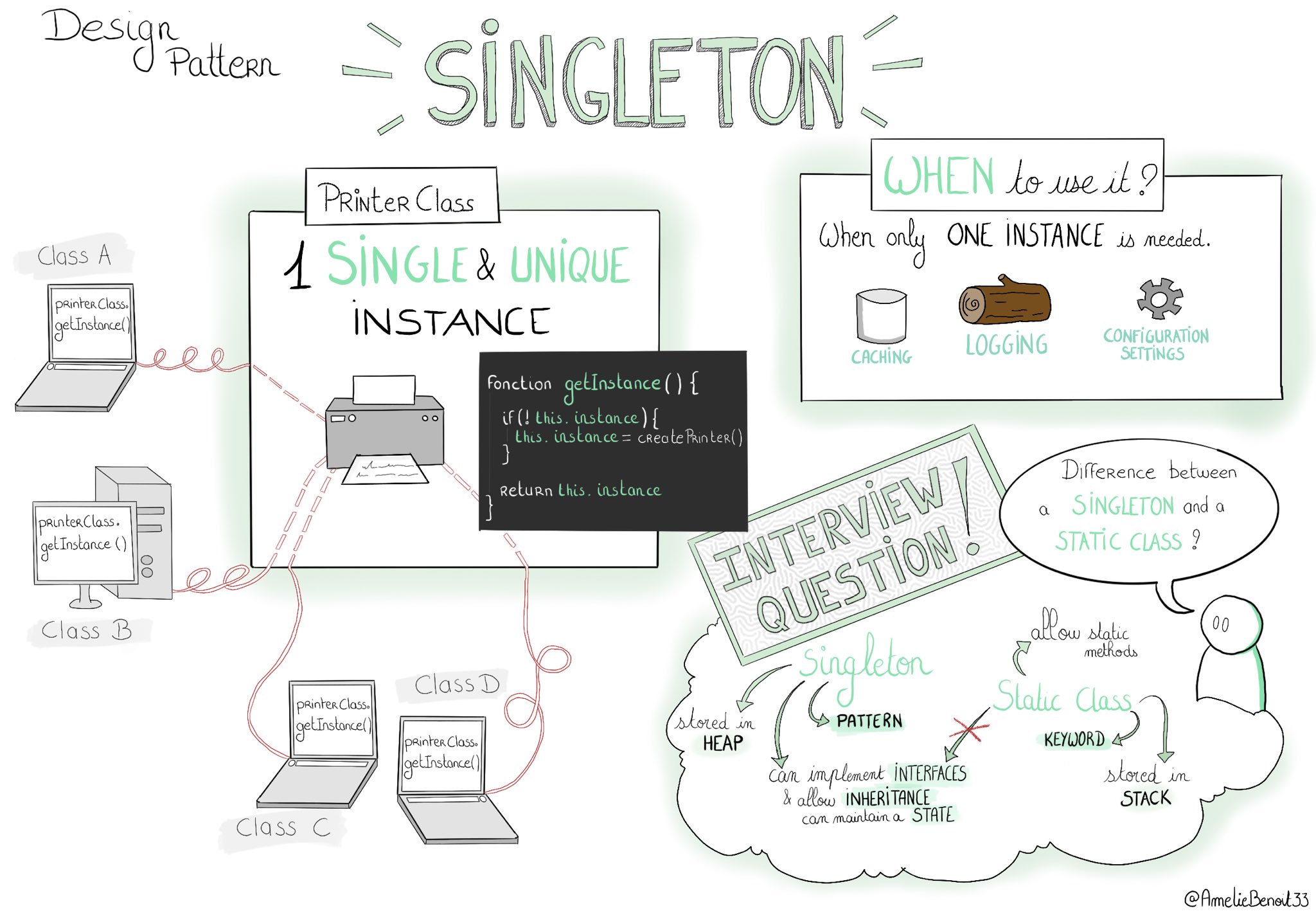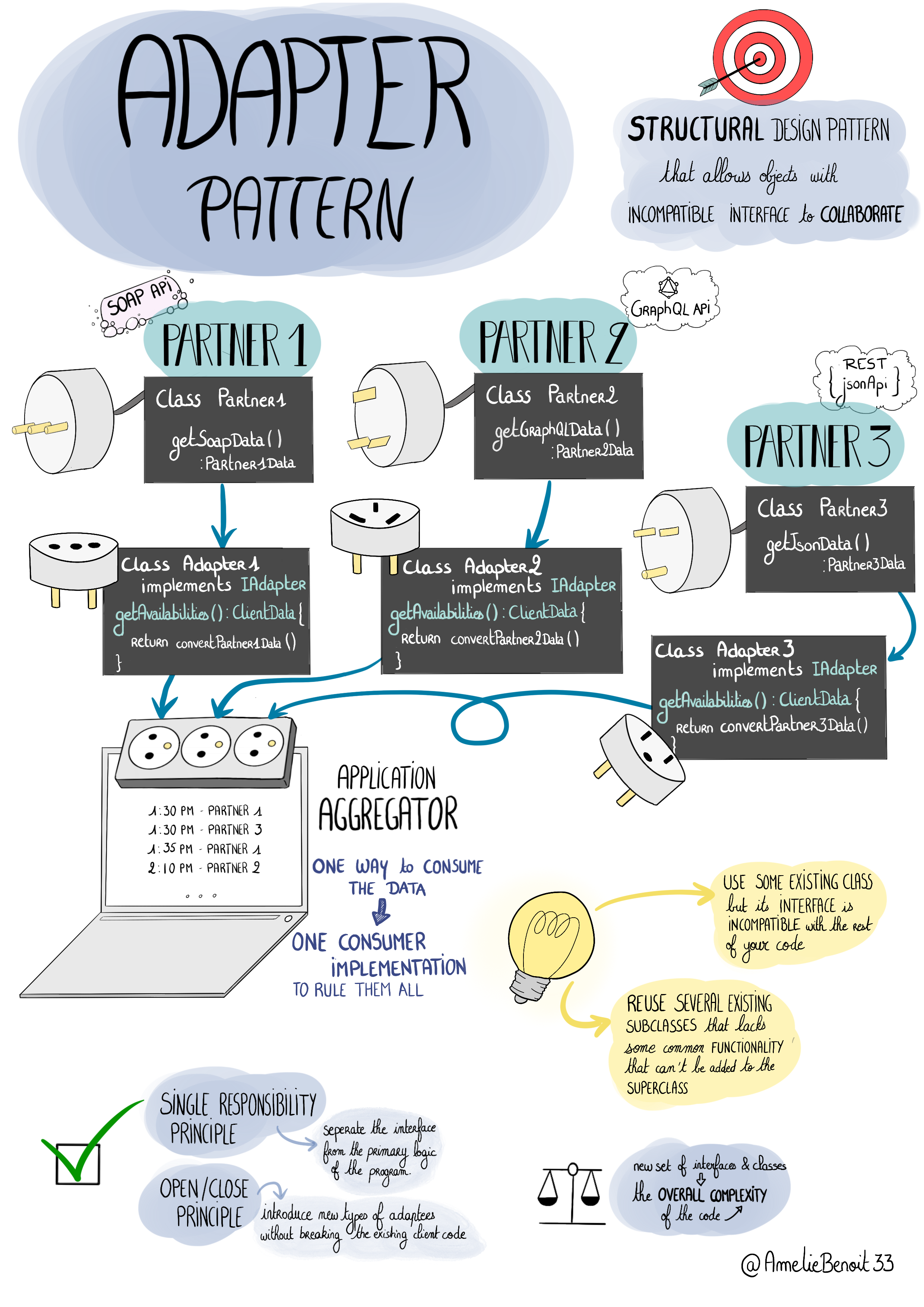Design Patterns as a Sketchnote
Initiative
We use so many tools, frameworks, we read so much code on a daily basis... I wanted to take a moment to go back to the basics of what I learnt at school and that I met here and there in my daily life. In order to better understand. To improve my thinking in the face of problems.
I was very surprised to see that the sketchnotes posted on Twitter had received some enthusiasm; I do them with pleasure on my free time and each like, each message is a reward that I did not expect. It also came with passionate and instructive debates, especially on the Singleton pattern.
All the sketchnotes on the design patterns I make are and will be added to this article.
Most sketchnote content is based on https://refactoring.guru
SOLID
5 basic principles OOP #SOLID that we sometimes find in some of the patterns mentioned next!
Turns out these principles are newer than I originally thought 😇

Singleton
The series of design patterns in sketchnote begins with the Singleton. Widely used in front-end frameworks, but not always good practice when it comes to implementing it in our code.
Some debates on Twitter about if it's a good practice to use this pattern: https://twitter.com/AmelieBenoit33/status/1570313646605234177 - I'll summarize it soon!

Builder
It reminds me of the character builder I played with in The Sims or some RPGs (weeks spent on Baldur's Gate, my childhood ❤️)
I often use this pattern to build datasets in unit tests - not always with a Director though.

Observer
Similar to a subscription system (magazine, newspaper, YouTube channel, etc.) where the publisher calls a subscriber method when an event occurs.
Widely used in frontend in various contexts!

Adapter
Simple to set up, it allows customers to consume APIs or data in a uniform way.
